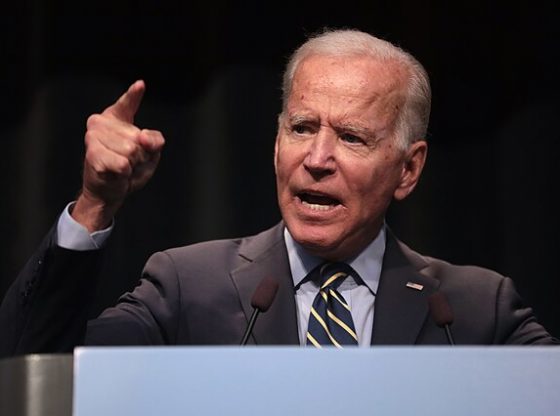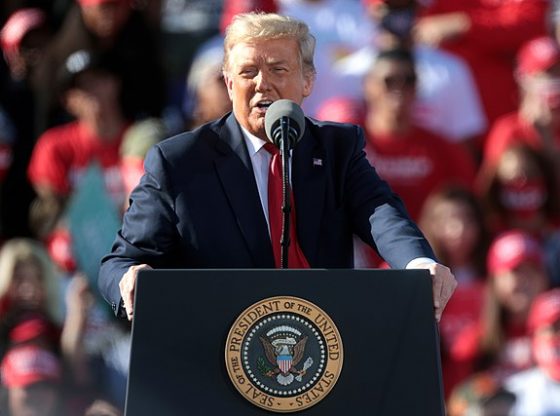The Biden administration faced several major problems on the international stage throughout 2023, some of which will bleed into the new year.
President Joe Biden and his administration have tried to manage major threats and circumvent obstacles from several foreign nations in 2023, including from those in East Asia, Eastern Europe, the Middle East and South America. Many international problems the Biden administration dealt with in 2023 have not been solved and have continued to metastasize going into 2024.
Tensions between the U.S. and China shot up early in the year after the Biden administration ordered that a Chinese spy balloon hovering over military installations in the U.S. be shot down. The balloon, which China claims was collecting weather data, was gathering intel from these installations and passing it back to Beijing; it was later revealed that the Biden administration knew what the balloon was doing and chose to delay its destruction in order to determine how it worked.
Biden later called the balloon’s destruction a “great embarrassment” for “dictators,” referring to Chinese President Xi Jinping, who Biden claimed had no idea the aircraft was in U.S. airspace and was “very upset” when it was shot down.
Biden’s comments came before his administration officials made a series of diplomatic trips over the summer to try to ease tensions and find common ground. These trips were viewed as largely unsuccessful in making gains and seen by some critics as concessionary. Ahead of one official’s trip in August, it was discovered that a Chinese-based hacking group had breached both the Commerce Department and State Department’s email servers, stealing some 60,000 emails from the latter department.
Biden and Xi were finally able to meet face-to-face for the first time in over a year at the Asia Pacific Economic Cooperation (APEC) conference in California in November. Xi told Biden he would agree to reestablishing military-to-military communication lines that had been shut off and taking steps to crack down on the production of fentanyl precursors.
After their meetings concluded, Biden held a press conference and once again referred to Xi as a “dictator,” a comment that seemed to be received poorly by his administration. Beijing promptly issued a statement that Biden’s remark was “extremely wrong” and an act of “irresponsible political manipulation,” according to Politico.
During one of their meetings, Xi directly made it clear to Biden that China would reunify with Taiwan, though it preferred the island peacefully conceded, rather than have to take it by force. China increased its military aggression in 2023 against Taiwan, the Philippine islands nearby and in the surrounding South China Sea, which Beijing maintains is its sole territory, despite having no international recognition for that claim.
China’s increasing hostility against the U.S. and the West – and its strengthened alliance with countries like Russia and North Korea – has further raised concerns that Beijing is prepping for a potential military conflict. Air Force Secretary Frank Kendall said point-blank in September that it “couldn’t be clearer” that China is preparing for a war that the U.S.; senior intelligence officials warned in December that the U.S. “has no real insight” as to Beijing’s real intentions or what it is doing behind the scenes.
The Middle East
The Biden administration struggled to keep Iran, the largest state-sponsor of terror and the leader of over a dozen Islamic terrorist organizations, in check during 2023, despite several attempts at appeasing it. The administration eased up on Iran’s oil sanctions consistently throughout the year, allowing the country to export nearly 2 million barrels of oil per day and rake in billions of dollars in revenue.
The administration continued to ease up on sanctions through the completion of a deal with Tehran in August to release $6 billion in frozen oil assets to Iran in exchange for five American prisoners. Both Republican and Democratic lawmakers were worried this move would only embolden Iran’s hostility and free up some of Tehran’s cash reserves to sponsor terrorism, which it has historically done.
The Biden administration boasted in late September that the Middle East “is quieter today than it has been for decades,” approximately one week before the Iranian-backed Hamas terrorist organization launched attacks against Israel on Oct. 7 that left 1,200 civilians dead and sparked a war in the Gaza Strip. Israel is carrying out a sweeping counteroffensiveagainst Hamas in Gaza and fending off attacks from other Iran-backed groups, such as Hezbollah in Lebanon and the Houthis in Yemen.
The Biden administration has publicly supported Israel’s right to defend itself and eradicate Hamas from the region, but behind closed doors has had several disagreements with Israeli leadership as to how the war should be carried out and when it should end. Biden and his officials have repeatedly called for humanitarian “pauses” in the conflict and pressured Israel into limiting the war’s scope and timeline.
U.S. forces in the Middle East have been on the defensive as broader conflict has expanded throughout the region since Oct. 7. U.S. military installations and coalition bases in Iraq and Syria have come under a barrage of attacks from Iranian-backed militias, and U.S. naval warships in the Red Sea have clashed with the Houthis dozens of times, a group that the Biden administration removed from its terrorist list in 2021.
The Biden administration freed up an additional $10 billion in oil assets to Iran in November despite Tehran’s vocal support for the Hamas Oct. 7 terror attacks and its suspected role in helping plan them. The administration has also approved tens of millions in humanitarian aid to Gaza since the attacks, even as U.S. government agencies warned there was a high-risk aid would end up in Hamas’ control.
Russia-Ukraine
The U.S. has been the largest supporter and financial backer of Ukraine’s counteroffensive against Russia after a full-scale war broke out between the two countries in early 2022. The Biden administration sent roughly $75 billion in humanitarian aid and military aid since the war started and on several occasions in 2023 sought an additional $60 billion in aid from Congress.
Biden appeared to admit during an interview in July that the U.S. was running low on munitions while simultaneously advocating for more military aid and equipment to Ukraine. The White House quickly walked back his statement, claiming that the amount of military aid Ukraine has received is from reserves and has no impact on U.S. munitions supply.
President Volodymyr Zelenskyy said in December that Ukraine’s summer counteroffensive failed to meet objectives or make any significant territorial gains. Kyiv is now considering adding half a million additional troops to its army as its current supply of service members dwindles; roughly 70,000 Ukrainian soldiers have died and over 100,000 have been seriously injured since the start of the war.
The majority of Congress has thus far rejected Biden’s additional request for Ukrainian aid unless it is tied to a border security package. Support for Ukraine’s continued counteroffensive among the American public dropped in 2023.
Biden continues to insist that Kyiv’s counteroffensive efforts must be supported, going so far as to make alarming predictions in December that the U.S. would enter a direct military conflict with Russia if Ukraine is defeated and Moscow then attacks a NATO ally. Behind closed doors, administration officials are now discussing how the war could be ended through negotiations rather than an uncertain Kyiv military victory.
Jake Smithon January 1, 2024
















